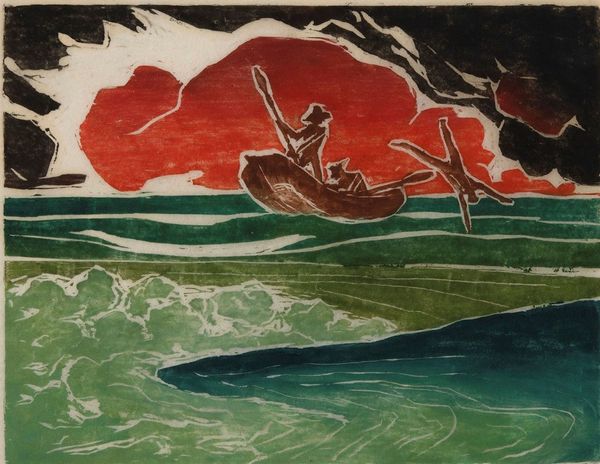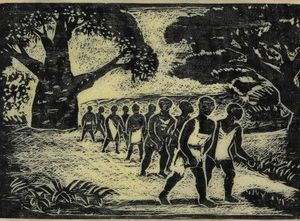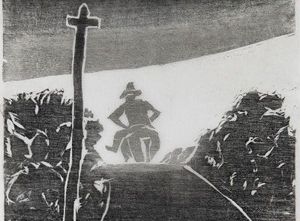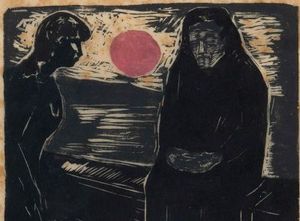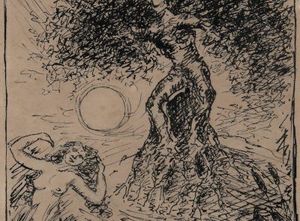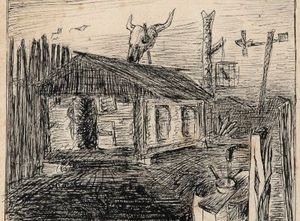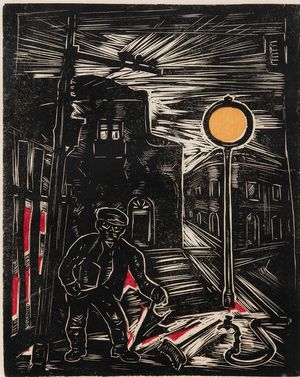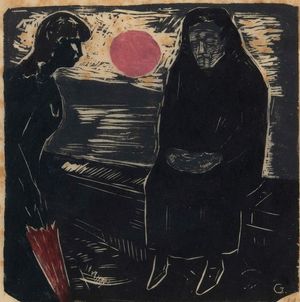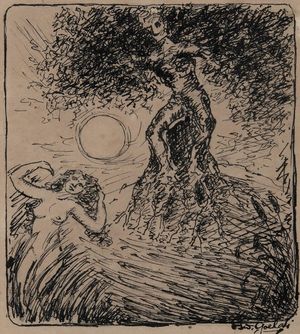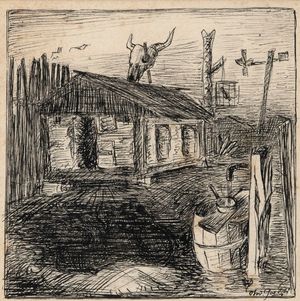Oswaldo Goeldi is known as one of Brazil's leading printmakers and is a fundamental artist of the first modernist generation. His work has been the subject of renewed interest thanks to the originality of his expressionist vocabulary, which represents a counterpoint to the hegemonic modernism in Brazil. Over the course of his more than 40-year long career, the artist produced woodcuts, lithographs, drawings and illustrations, developing a fertile relationship with the publishing market by illustrating literary works by authors such as Dostoyevsky and Raul Bopp, as well as working for numerous magazines and newspapers.
Oswaldo Goeldi's work stands out for the breadth of its interests and the depth of the issues presented. The artist was skillful at incorporating the signs of urban life into woodcuts in such a way as to create a unique language. The city in Goeld's work is devised on a human scale, where the intricate dimension of large metropolises is less higlighted than the features of forgotten places, alleys and dead-end streets. His repertoire of "image-enigmas" includes recurring symbols such as the umbrella, the hat, the lamp, and the lamppost.
The dense atmosphere that derives from his landscapes results above all from the relationship between space and the human figure, which undermines any form of harmony, leading to astonishment and suggesting mystery. Goeldi depicts characters on the margins of society, such as fishermen, prostitutes, city workers and other wandering figures. For the poet Carlos Drummond de Andrade, who dedicated a poem to the artist in a 1959 book, Goeldi's characters are "creatures condemned to the world".
Goeldi was also a pioneer of chromatic experiments in the field of engraving. Works from his early career, made in 1932, already tested he expressive use of color printing in yellow and red. Color is a special element through which he gives the work a new meaning, between the fantastic and the symbolic, as the artist himself defines it. He knew how to explore the qualities and particularities of woodcut like few others did.
Goeldi's work is considered by critics to be of exemplary modernity, and deeply revealing of the contradictions arising from his transit between Europe and Brazil. He was born in Rio de Janeiro but spent his childhood in Belém do Pará. His father was Emilio Augusto Goeldi, a renowned Swiss naturalist. In 1901, Oswaldo Goeldi returned to Switzerland with his family, where he spent his adolescence and youth. His formative years began in 1917, when he entered the École des Arts et Métiers in Geneva and held his first exhibition in a gallery in Bern. Still in 1917, he came into contact with the work of Alfred Kubin, who had a great influence on his style. For years, he corresponded with the Austrian artist and even joined his group, Der Blaue Reiter, one of the most representative of German Expressionism.
In 1919, Goeldi settled in Brazil and began working as an illustrator for various magazines. Two years later, he held his first exhibition at the Liceu de Artes e Ofícios, an event that attracted the attention of writers such as Manuel Bandeira and Raquel de Queiroz, as well as praise from painter Di Cavalcanti. In the 1930s, he created the album 10 Gravuras em Madeira (Ten Wood Engravings). During these years and the following decade, he worked for the newspaper A manhã and the publishing house José Olympio, becoming known to the public as an illustrator.
Recognition of the pioneering nature of his style in printmaking was consolidated in 1950, when he exhibited at the 25th Venice Biennale, and in 1951, when he was awarded the Grand Prize for Printmaking at the 1st São Paulo Biennale. Today, Oswaldo Goeldi's works are part of the collections of the main Brazilian institutions and important international collections, including: Pinacoteca do Estado de São Paulo, São Paulo; MAM São Paulo, MAC USP, São Paulo; MASP, São Paulo; MAM Rio de Janeiro; Museu Nacional de Belas Artes - MNBA, Rio de Janeiro; Fundação Edson Queiroz, Fortaleza; Landesmuseum, Linz, Austria and Essex Collection of Art from Latin America - ESCALA, Colchester, United Kingdom, among others.
